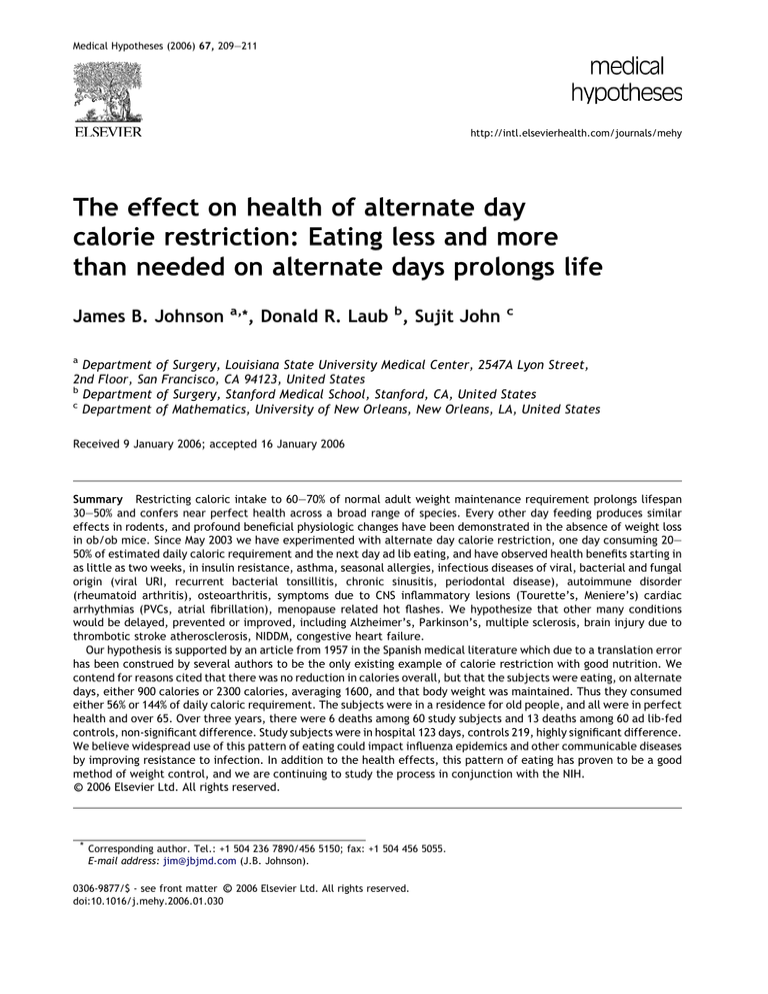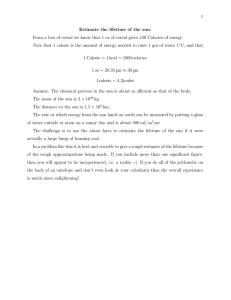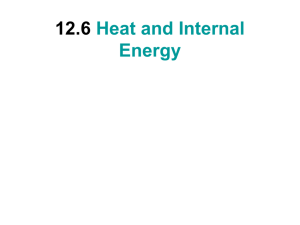
Medical Hypotheses (2006) 67, 209–211
http://intl.elsevierhealth.com/journals/mehy
The effect on health of alternate day
calorie restriction: Eating less and more
than needed on alternate days prolongs life
James B. Johnson
a,*
, Donald R. Laub b, Sujit John
c
a
Department of Surgery, Louisiana State University Medical Center, 2547A Lyon Street,
2nd Floor, San Francisco, CA 94123, United States
b
Department of Surgery, Stanford Medical School, Stanford, CA, United States
c
Department of Mathematics, University of New Orleans, New Orleans, LA, United States
Received 9 January 2006; accepted 16 January 2006
Summary Restricting caloric intake to 60–70% of normal adult weight maintenance requirement prolongs lifespan
30–50% and confers near perfect health across a broad range of species. Every other day feeding produces similar
effects in rodents, and profound beneficial physiologic changes have been demonstrated in the absence of weight loss
in ob/ob mice. Since May 2003 we have experimented with alternate day calorie restriction, one day consuming 20–
50% of estimated daily caloric requirement and the next day ad lib eating, and have observed health benefits starting in
as little as two weeks, in insulin resistance, asthma, seasonal allergies, infectious diseases of viral, bacterial and fungal
origin (viral URI, recurrent bacterial tonsillitis, chronic sinusitis, periodontal disease), autoimmune disorder
(rheumatoid arthritis), osteoarthritis, symptoms due to CNS inflammatory lesions (Tourette’s, Meniere’s) cardiac
arrhythmias (PVCs, atrial fibrillation), menopause related hot flashes. We hypothesize that other many conditions
would be delayed, prevented or improved, including Alzheimer’s, Parkinson’s, multiple sclerosis, brain injury due to
thrombotic stroke atherosclerosis, NIDDM, congestive heart failure.
Our hypothesis is supported by an article from 1957 in the Spanish medical literature which due to a translation error
has been construed by several authors to be the only existing example of calorie restriction with good nutrition. We
contend for reasons cited that there was no reduction in calories overall, but that the subjects were eating, on alternate
days, either 900 calories or 2300 calories, averaging 1600, and that body weight was maintained. Thus they consumed
either 56% or 144% of daily caloric requirement. The subjects were in a residence for old people, and all were in perfect
health and over 65. Over three years, there were 6 deaths among 60 study subjects and 13 deaths among 60 ad lib-fed
controls, non-significant difference. Study subjects were in hospital 123 days, controls 219, highly significant difference.
We believe widespread use of this pattern of eating could impact influenza epidemics and other communicable diseases
by improving resistance to infection. In addition to the health effects, this pattern of eating has proven to be a good
method of weight control, and we are continuing to study the process in conjunction with the NIH.
c 2006 Elsevier Ltd. All rights reserved.
* Corresponding author. Tel.: +1 504 236 7890/456 5150; fax: +1 504 456 5055.
E-mail address: jim@jbjmd.com (J.B. Johnson).
0306-9877/$ - see front matter c 2006 Elsevier Ltd. All rights reserved.
doi:10.1016/j.mehy.2006.01.030
210
It is well established that by reducing the number
of calories required for weight maintenance to
60–70% of normal, lifespan is increased up to
40%, with near perfect health across a broad range
of species.
Application of this calorie restriction (CR) principle to humans would be of enormous value, but
such severe restriction makes compliance impossible on a daily basis. Many animal studies of intermittent feeding (24 feeding, 24 h only water)
have demonstrated health-promoting physiological
changes. Recently in Lancet, Mattson [1] wrote an
editorial to encourage increased study of the effect
of (reduced) meal frequency on health. For two
years we have experimented with an alternate
day pattern of eating in which intake is limited to
20–50% of estimated daily requirement one day
followed by ad lib eating the next day. This alternate day calorie restriction appears to have
health-promoting effects in the absence of weight
loss.
In support of our hypothesis is our re-interpretation of a study in the medical literature.
Several leading authors have cited a study by
Eduardo Arias Vallejo [2]1 published in 1956 in the
Spanish journal Revista Clinica Espanola as the only
example in the medical literature of calorie restriction in humans in which good nutrition was practiced [1–6].
After examining the original Spanish article, we
believe that there was no calorie reduction, but
that there was a pattern of eating in which on
alternating days subjects ate less and more than
their daily caloric requirement.
The study was carried out in an old age home run
by a religious order (St. Joseph) in Madrid over a
three year period on a population of 120 men and
women ‘‘in perfect health’’ over the age of 65.
Sixty treatment subjects were fed on odd days of
the month a diet containing 2300 calories with
50 g of protein and 40 g of fat. On even days, they
were given one liter of whole milk and 500 g of
fresh fruit (about 900 calories). Literally translating from Spanish, the 60 controls were fed ‘‘the
first diet’’ (‘‘la primera dieta’’) , referring to the
diet which was described first in the text (2300 calorie with 50 g protein and 40 g of fat). Stunkard
analyzed the Vallejo article in 1976 and stated that
the control group was fed 2300 calories per day. No
such statement appears in the original article and
Stunkard’s mis-translation led subsequent authors
who relied on his description to incorrect and
1
Dr. Arias Vallejo published over 200 professional articles and
served as president of the Spanish Society of Digestive
Pathology.
Johnson et al.
impossible conclusions. We believe what Vallejo
meant by ‘‘the first diet’’ was ‘‘ad lib consumption
of the standard institutional diet in the nursing
home’’, but not 2300 calories per day, as discussed
below.
There was a highly statistically significant difference in number of days in the infirmary (123 treatment group, 219 for controls, p < .001) but
non-significant difference in deaths (treatment 6,
controls 13). Vallejo and other authors conclude
that the study suggests the regime employed might
prolong lifespan in the elderly.
The error in previous analyses is in estimating
daily calorie requirements. We were unable to find
data for calorie consumption in people over 65 in
Spain in the mid-1950s, but an estimate of daily
calorie requirement can be made by using the average of male and female body weight and height
among Spaniards in the 1960s, age 20–49 (Eveleth
and Tanner, Worldwide variation in human growth,
1976, pages 33, 34, 285, 287, Ref. [9]). Applying
the Harris Benedict formula for calculating calorie
consumption and assuming an inactive lifestyle,
the figure calculated for the younger age group is
1600 calories per day, and may have been slightly
lower for these elderly people.
Various authors have stated that there was a
35% calorie deficit in the experimental group
[4,5,7] By this reckoning each subject would have
lost an average of more than 38 kg in the first
year of the study. It is difficult to imagine that
the subjects, their families, Dr. Vallejo or the
St. Joseph nuns would have permitted significant
weight loss in these elderly subjects. Further,
there is no mention in the article of calorie
restriction or synonyms or weight loss among the
subjects, and the two tables in the article label
the two groups as ‘‘dias alternos’’(alternate days)
and ‘‘dieta normal’’(normal diet) strongly suggesting the control group was simply fed ad lib
the institutional food.
It is inconceivable that the controls were eating
an average of 2300 calories daily, at least 44% more
than daily requirement by our method of
estimation.
Adding the daily intake of 900 and 2300 and
dividing by 2 yields 1600 calories per day, equal
to our estimated daily requirement for this group
of elderly people.
Thus it appears the treatment subjects were
either consuming 700 calories less (900) or 700 calories more (2300) than the daily requirement of
1600 calories on the two days. This study is therefore not a study of ‘‘caloric restriction’’ but instead is a study of an up and down pattern of
consumption with no change in body weight.
The effect on health of alternate day calorie restriction
On the fruit/milk day, the actual calorie intake
as a function of daily requirement, (900 divided
by 1600) is 56% of daily requirement. Based on
our anecdotal experience, compliance with an
alternate day restriction of this degree is not difficult for a motivated individual to follow.
Recent animal evidence [10] suggests that body
weight or body fat content may be unrelated to
health-promoting physiologic changes (improved
glucose metabolism and neuronal resistance to injury) seen with intermittent fasting (24 h of ad lib
feeding followed by 24 h of only water).
We have had anecdotal experience with over 500
subjects for up to 2.5 years following a repeating
pattern of ad lib eating one day followed by 20–
50% of daily estimated calorie requirement the
next day. We have observed improvement in a variety of disease conditions, starting within 2 weeks,
including insulin resistance, asthma, seasonal allergies, autoimmune disease (rheumatoid arthritis),
osteoarthritis, infectious disease of viral, bacterial, and fungal origin(toenail fungus, periodontal
disease, viral URIs)inflammatory central nervous
system lesions (Tourette’s syndrome, Meniere’s
disease) and cardiac arrhythmias (frequent extrasystoles, atrial fibrillation), menopause related
hot flashes.
Based on a broad range of calorie restriction
studies in animals in which virtually all diseases
are delayed, prevented or ameliorated by calorie
restriction, we propose that this dietary pattern,
with or without weight loss, will delay, prevent
or improve a wide variety of human diseases in
addition to the above, including multiple sclerosis,
Alzheimer’s disease, Parkinson’s disease, atherosclerosis, NIDDM, congestive heart failure, and
resistance to brain injury from thrombotic stroke.
Clearly, if our interpretation of the Vallejo
study and our anecdotal observations are correct,
the implications for improved human health are
enormous if this pattern of eating were widely
adopted. Aside from individual health, widespread
use could alter patterns of epidemics such as
influenza because of resistance to infection imparted by the calorie restriction mechanism presumably activated by the intermittent pattern of
consumption.
We have also found this pattern of eating to lend
itself to weight control. It allows the subject to eat
211
normally every other day and thus avoid the endless horizon of deprivation chronic dieters envision.
It is our observation that this alternating day pattern of calorie intake makes this method feasible
for weight control while simultaneously conferring
improvement in all aspects of health.
In collaboration with Mark Mattson, PhD, Chief,
Neurosciences Laboratory, Gerontology Research
Center, National Institute of Aging, National Institutes of Health, we are nearing completion of a
manuscript describing an IRB approved 8 week pilot
study of the effect of following a repeating pattern
of eating ad lib one day and 20% of daily caloric
requirement the next day on subjects with moderate persistent asthma. Preliminary results show
highly significant improvement in parameters of
pulmonary function and markers of inflammation
and oxidative damage and will be submitted to a
peer-reviewed medical journal.
References
[1] Mattson MP. The need for controlled studies of the
effects of meal frequency on health. Lancet 2005;365:
1978–80.
[2] Vallejo EA. La dieta de hambre a dı́as alternos en
la alimentación de los viejos. Rev Clin Esp 1956;63:
25–7.
[3] Frankel S, Gunnell DJ, Peters TJ, et al. Childhood energy
intake and adult mortality from cancer: the Boyd Orr
Cohort Study. BMJ 1998;316:499–504.
[4] Heilbronn LK, Smith SR, Martin CK, et al. Alternate-day
fasting in nonobese subjects: effects on body weight, body
composition, and energy metabolism. Am J Clin Nutr
2005;81:69–73.
[5] Heilbronn LK, Ravussin E. Calorie restriction and aging:
review of the literature and implications for studies in
humans. Am J Clin Nutr 2003;78:361–9.
[6] Stunkard AJ. Nutrition, aging and obesity. In: Rockstein M,
Sussman ML, editors. Nutrition, longevity, and aging. New
York: Academic Press; 1976. p. 253–84.
[7] Roberts SB, Pi-Sunyer X, Kuller L, et al. Physiologic effects
of lowering caloric intake in nonhuman primates and
nonobese humans. J Gerontol A Biol Sci Med Sci 2001;56:
66–75.
[9] Eveleth PB, Tanner JM. Worldwide variation in human
growth. New York: Cambridge University Press; 1976.
foreword by Chang WH. Cambridge [Eng.].
[10] Anson RM, Guo Z, de Cabo R, et al. Intermittent fasting
dissociates beneficial effects of dietary restriction on
glucose metabolism and neuronal resistance to injury from
calorie intake. Proc Natl Acad Sci USA 2003;100:
6216–20.








